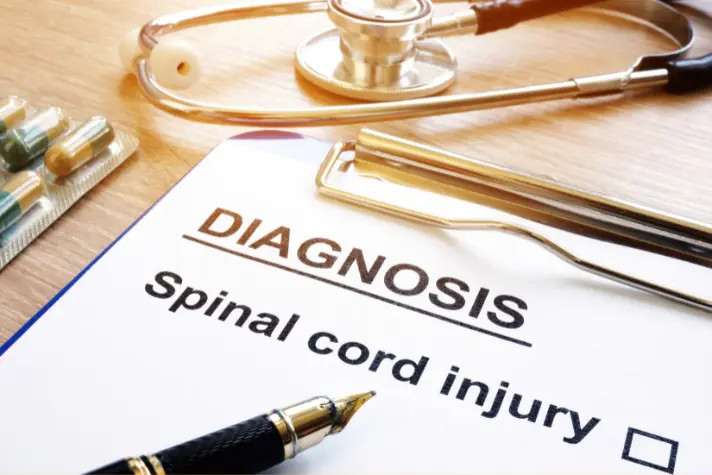
Spinal cord injuries can cause disruption in the connection of the nerves between the brain and the rest of the body. This damage can range from mild to severe and affects an estimated 17,500 people per year.
When it comes to spinal cord injuries at birth, this can occur when a doctor causes strain to a child’s neck by pulling, twisting, or using tools whilst the baby is passing through the birth canal.
There are several different types of spinal cord injuries, including ones that only affect the neck, ones that affect the lower legs, and ones that can result in a total loss of control over all four limbs, known as quadriplegia.
Read on to find out more about spinal cord injuries at birth, including what are the main causes and what are the best treatments currently available.
You may also like:
- How To Cope Mentally If You’ve Had A Spinal Cord Injury
- [Birth Injuries] How Does Brain Injury Occur During Birth?
- How a Birth Injury Can Impact Your Life
What causes spinal cord injuries at birth?
Spinal cord injuries are more common in complicated births where the baby needs to be delivered quickly due to the umbilical cord being compressed and the baby being unable to breathe.
The use of vacuums or forceps can sometimes cause spinal cord injuries at birth if they are misused. Tool misuse can cause severe stretching of the nerves in the neck and back, as well as internal bleeding in the brain and spinal cord.
A failure to diagnose spina bifida during pregnancy can be the cause of a spinal cord injury, as traditional deliveries are dangerous for babies with this condition.
Who is most at risk of spinal cord injuries at birth?
There are several factors that can increase a baby’s risk of being born with a spinal cord injury.
These include:
- The baby is breached
- The baby weighs more than 8 pounds
- The baby’s head is hyperextended
- The baby has spina bifida
- There is a risk of bleeding from preeclampsia or an infection
What are the best treatments for spinal cord injuries?
The best treatment for spinal cord injuries at birth is prevention. This means that if your baby is at risk of a spinal cord injury, your doctor needs to take preventative measures and precautions during labour.
If preventative treatment is not an option for you, then there are several other treatments that you can try, such as:
Stem cell therapy
Stem cell therapy has been proven to be highly effective at managing spinal cord injuries, including those in children. You can find out more about this innovative treatment at bioxcellerator.com.
Surgery
In some cases, surgical procedures can be carried out to stabilize any spinal fractures, release pressure on the spine, and treat any other injuries that occur.
Medication
Medication can be used to help improve quality of life by reducing swelling around the spinal cord, managing pain, and improving bowel and bladder control.
Physical therapy
Physical therapy is available for children with spinal cord injuries and can be highly effective at preventing muscle wasting, reducing spasticity, and retraining the body to use other muscles.
About The Author:
Maggie Hammond. Proud mama to two little people, and has one too many furry friends. Passionate about alternative medicine, education, the great outdoors, and animal welfare.


![[Adult Acne] Common Causes, Remedies, and Best Treatments Adult Acne](https://www.safeandhealthylife.com/wp-content/uploads/2023/02/Adult-Acne-150x150.jpg)

